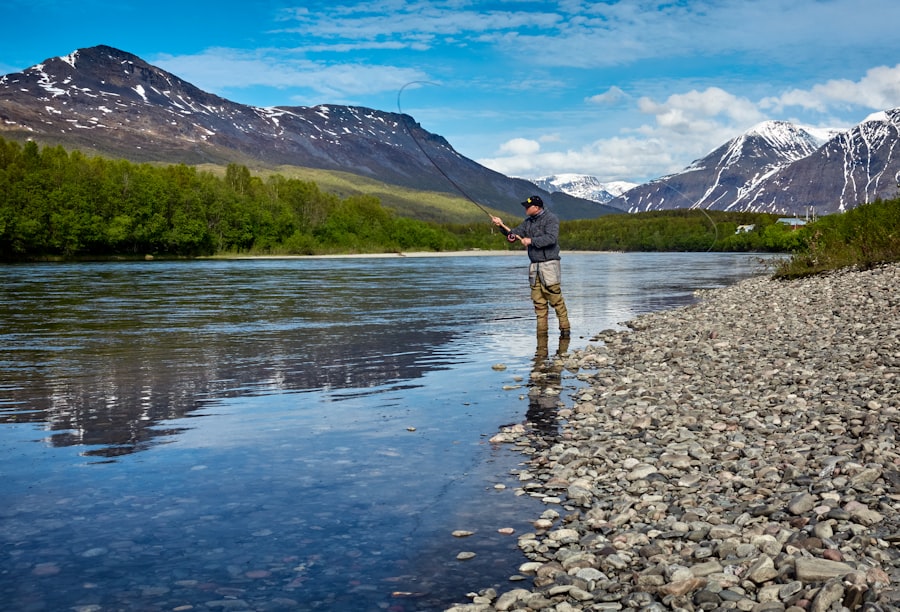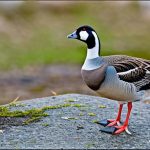Geese invading public spaces has become a growing concern in many areas. These birds can cause a variety of problems, from leaving droppings all over sidewalks and parks to damaging property with their aggressive behavior. As the population of geese continues to increase, it is becoming more important to find effective solutions to keep them out of these areas.
Key Takeaways
- Geese invasion is a common problem that can cause damage to property and pose health risks.
- Understanding geese behavior is important in finding effective solutions to keep them out.
- Different methods such as physical barriers, repellents, and habitat modification can be used to deter geese.
- Fishing line is an effective solution because it creates a physical barrier that geese cannot fly through.
- Choosing the right type of fishing line and installing it properly is crucial for its effectiveness in keeping geese out.
Understanding the behavior of geese
Geese are known for their strong homing instincts and their tendency to return to the same areas year after year. They are attracted to open spaces with access to water, such as parks, golf courses, and ponds. Geese are also social animals and tend to gather in large flocks, which can make them difficult to control.
Different methods used to keep geese out
There are several methods that have been used to deter geese from public spaces. One common method is the use of decoys, such as plastic owls or coyotes, which are placed in areas where geese are a problem. Another method is the use of noise makers, such as propane cannons or air horns, which create loud sounds that scare away the geese.
While these methods can be effective in some cases, they also have their drawbacks. Decoys may only work for a short period of time before the geese realize they are not a threat. Noise makers can be disruptive to people in the area and may not be effective if the geese become accustomed to the noise.
Why fishing line is an effective solution
One method that has been gaining popularity in recent years is the use of fishing line to deter geese. Fishing line is an effective solution because it creates a physical barrier that prevents geese from landing or walking on certain areas. It is also a cost-effective solution that does not require any ongoing maintenance or replacement.
Choosing the right type of fishing line for the job
When choosing fishing line for geese control, it is important to consider the strength and visibility of the line. There are several types of fishing line available, including monofilament, fluorocarbon, and braided lines. Monofilament line is a popular choice because it is strong and relatively invisible. Fluorocarbon line is also a good option because it is nearly invisible underwater. Braided lines are the strongest option but may be more visible to geese.
How to install fishing line to keep geese out

Installing fishing line to keep geese out is a relatively simple process. First, determine the areas where geese are a problem and where you want to prevent them from landing or walking. Next, attach the fishing line to posts or stakes at a height of about 2-3 feet off the ground. Space the posts or stakes about 5-10 feet apart, depending on the size of the area you are trying to protect. Finally, tie the fishing line tightly between the posts or stakes, making sure it is taut and not sagging.
Maintenance and upkeep of the fishing line
Once the fishing line is installed, it is important to regularly check and maintain it to ensure its effectiveness. Inspect the line for any damage or sagging, and replace any sections that are worn or broken. It is also a good idea to periodically tighten the line to keep it taut.
Safety precautions to consider when using fishing line
While fishing line can be an effective solution for geese control, there are some safety precautions that should be taken when installing and maintaining it. Be careful when handling the fishing line, as it can be sharp and cause injury if not handled properly. It is also important to ensure that the fishing line does not pose a tripping hazard for people in the area.
Other benefits of using fishing line for geese control
In addition to being an effective solution for geese control, fishing line also has other benefits. It is an affordable option that does not require any ongoing costs or maintenance. Fishing line is also an eco-friendly solution that does not harm the geese or the environment.
Conclusion and final thoughts on using fishing line to keep geese out
In conclusion, geese invasion in public spaces can be a nuisance and cause a variety of problems. While there are several methods available to deter geese, fishing line has proven to be an effective and affordable solution. By understanding the behavior of geese and choosing the right type of fishing line, it is possible to create a physical barrier that prevents geese from landing or walking in certain areas. With proper installation and maintenance, fishing line can be a long-lasting solution for keeping geese out of public spaces.
If you’re looking for effective ways to keep geese out of your garden or property, you may want to consider using fishing line as a deterrent. This simple yet ingenious method has been proven to be highly effective in preventing geese from entering unwanted areas. By stringing fishing line at various heights and angles, it creates a visual barrier that confuses and discourages geese from approaching. To learn more about this innovative technique, check out this informative article on poultrywizard.com: “Using Fishing Line as a Geese Deterrent”.
Meet Walter, the feathered-friend fanatic of Florida! Nestled in the sunshine state, Walter struts through life with his feathered companions, clucking his way to happiness. With a coop that’s fancier than a five-star hotel, he’s the Don Juan of the chicken world. When he’s not teaching his hens to do the cha-cha, you’ll find him in a heated debate with his prized rooster, Sir Clucks-a-Lot. Walter’s poultry passion is no yolk; he’s the sunny-side-up guy you never knew you needed in your flock of friends!







